Growing romaine lettuce hydroponically might sound like something out of a sci-fi movie, but trust me, it’s easier than you think! Forget battling soil pests and unpredictable weather; with a simple hydroponic setup, you can have fresh, crisp romaine lettuce right in your kitchen, all year round.
Hydroponics, the art of growing plants without soil, has ancient roots. From the Hanging Gardens of Babylon (though debated) to the floating gardens of the Aztecs, humans have been experimenting with soilless cultivation for centuries. Today, it’s experiencing a major resurgence, and for good reason!
Why should you try growing romaine lettuce hydroponically? Well, imagine this: no more trips to the grocery store for wilted lettuce. No more mysterious dirt clinging to your salad. Just perfectly clean, delicious romaine, ready to be harvested whenever you need it. Plus, hydroponics is incredibly water-efficient and can be done in small spaces, making it perfect for apartment dwellers or anyone looking to reduce their environmental footprint. I’m excited to share some easy DIY tricks and hacks that will have you enjoying homegrown romaine in no time!
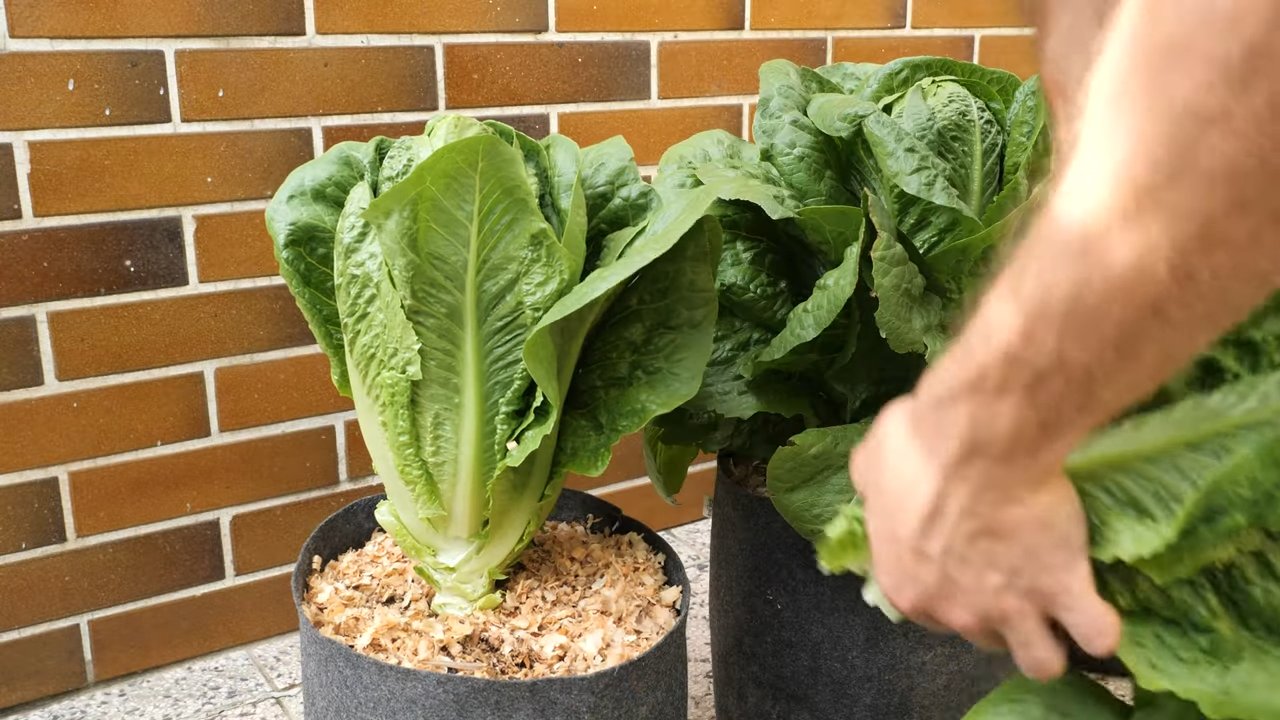
Growing Romaine Lettuce Hydroponically: A Beginner’s Guide
Hey there, fellow gardening enthusiasts! Ever dreamt of having fresh, crisp romaine lettuce at your fingertips, year-round, without the hassle of soil? Well, you’re in the right place! I’m going to walk you through the surprisingly simple process of growing romaine lettuce hydroponically. Trust me, once you taste the difference between store-bought and homegrown hydroponic lettuce, you’ll never go back.
What You’ll Need: Your Hydroponic Romaine Shopping List
Before we dive in, let’s gather our supplies. Don’t worry, you probably have some of these lying around already!
* Romaine Lettuce Seeds: Choose your favorite variety! I personally love ‘Paris Island Cos’ for its classic flavor and texture.
* Seed Starting Tray and Dome: This helps create a humid environment for germination.
* Rockwool Cubes or Seed Starting Plugs: These will be our initial growing medium.
* Hydroponic Nutrient Solution: Specifically formulated for leafy greens. Look for a balanced formula with nitrogen, phosphorus, and potassium.
* Net Pots: These will hold the lettuce plants in our hydroponic system. Choose a size that fits your system.
* Hydroponic System: We’ll be focusing on a Deep Water Culture (DWC) system, which is beginner-friendly. You’ll need:
* A container (bucket, tub, or even a repurposed storage bin)
* An air pump
* An air stone
* Air tubing
* pH Meter or pH Test Kit: Crucial for maintaining the correct pH level of the nutrient solution.
* pH Up and pH Down Solutions: To adjust the pH as needed.
* Grow Lights (Optional but Recommended): Especially if you’re growing indoors or during the winter months. LED grow lights are energy-efficient and work great.
* Timer (for Grow Lights): To automate the light cycle.
* Measuring Cups and Spoons: For accurate nutrient mixing.
* Water: Filtered or dechlorinated water is best.
* Spray Bottle: For misting seedlings.
Phase 1: Germinating Your Romaine Seeds
This is where the magic begins! Getting your seeds to sprout is the first step towards a bountiful lettuce harvest.
1. Prepare Your Seed Starting Tray: Moisten your rockwool cubes or seed starting plugs with water. Make sure they’re thoroughly soaked but not dripping wet.
2. Sow the Seeds: Place 2-3 romaine lettuce seeds in the center of each cube or plug. Gently press them down slightly.
3. Create a Humid Environment: Cover the seed starting tray with the dome. This will help retain moisture and promote germination.
4. Provide Light and Warmth: Place the tray under grow lights or in a warm, sunny location. If using grow lights, set the timer for 16-18 hours of light per day.
5. Maintain Moisture: Check the cubes or plugs daily and mist them with water as needed to keep them moist.
6. Wait for Germination: Romaine lettuce seeds typically germinate within 3-7 days. Once the seedlings emerge, remove the dome to prevent damping off (a fungal disease).
Phase 2: Setting Up Your Deep Water Culture (DWC) System
Now that we have seedlings, let’s build their new home! A DWC system is a simple and effective way to grow hydroponically.
1. Prepare Your Container: Clean your container thoroughly with soap and water. Rinse it well to remove any residue.
2. Drill Holes for Net Pots (Optional): If your container doesn’t have pre-made holes, drill holes in the lid that are slightly smaller than the diameter of your net pots. This will allow the net pots to sit securely in the lid. You’ll want to space the holes far enough apart so the mature lettuce plants have room to grow without crowding each other.
3. Add Nutrient Solution: Fill the container with water, leaving a few inches of space at the top.
4. Mix Nutrient Solution: Carefully follow the instructions on your hydroponic nutrient solution to mix the correct concentration. Use measuring cups and spoons to ensure accuracy.
5. Check and Adjust pH: Use your pH meter or test kit to check the pH of the nutrient solution. The ideal pH for romaine lettuce is between 5.5 and 6.5. Use pH Up or pH Down solutions to adjust the pH as needed. Add small amounts at a time and re-test until you reach the desired range.
6. Install Air Pump and Air Stone: Connect the air tubing to the air pump and the air stone. Place the air stone at the bottom of the container. The air pump will provide oxygen to the roots, which is essential for healthy growth.
7. Test the System: Turn on the air pump and make sure the air stone is producing bubbles. Let the system run for a few hours to ensure everything is working properly.
Phase 3: Transplanting and Growing Your Romaine Lettuce
Time to move our seedlings into their hydroponic paradise!
1. Prepare the Net Pots: Gently remove the rockwool cubes or seed starting plugs from the seed starting tray.
2. Place Seedlings in Net Pots: Place each cube or plug into a net pot. You can add a small amount of hydroton clay pebbles around the cube to provide extra support, but it’s not always necessary.
3. Transplant to DWC System: Carefully place the net pots into the holes in the lid of your DWC container. The bottom of the rockwool cube should be just touching the nutrient solution. This will allow the roots to reach the water and nutrients.
4. Provide Light: If you’re using grow lights, position them above the lettuce plants. Maintain a distance of 6-12 inches between the lights and the plants. Set the timer for 16-18 hours of light per day. If you’re growing outdoors, choose a location that receives at least 6 hours of sunlight per day.
5. Monitor and Maintain: Regularly check the water level in the container and add more nutrient solution as needed. Also, monitor the pH of the nutrient solution and adjust it as necessary to maintain the ideal range of 5.5-6.5.
6. Change Nutrient Solution: Change the nutrient solution every 1-2 weeks to prevent nutrient imbalances and the buildup of harmful bacteria.
7. Observe for Pests and Diseases: Keep an eye out for any signs of pests or diseases. If you notice any problems, address them promptly with appropriate organic solutions.
Phase 4: Harvesting Your Hydroponic Romaine Lettuce
The moment we’ve all been waiting for! Harvesting your own fresh, delicious romaine lettuce.
1. Harvesting Time: Romaine lettuce is typically ready to harvest in 4-6 weeks after transplanting. You can harvest the entire head at once, or you can harvest individual leaves as needed.
2. Harvesting Method: To harvest the entire head, use a sharp knife or scissors to cut the lettuce at the base of the plant. To harvest individual leaves, simply pluck them off from the outer layers of the plant.
3. Enjoy Your Harvest: Rinse the lettuce leaves thoroughly with water and enjoy them in salads, sandwiches, or wraps.
4. Successive Harvesting: If you only harvested outer leaves, the plant will continue to produce new leaves for several weeks. Just keep monitoring the nutrient solution and pH levels.
Troubleshooting Tips for Hydroponic Romaine
Even with the best planning, sometimes things can go awry. Here are a few common issues and how to tackle them:
* Yellowing Leaves: This could indicate a nutrient deficiency. Make sure you’re using a balanced hydroponic nutrient solution and that the pH is within the correct range.
* Slow Growth: This could be due to insufficient light, incorrect pH, or a nutrient deficiency. Check your lighting setup, pH levels, and nutrient solution.
* Root Rot: This is a fungal disease that can occur if the roots are not getting enough oxygen. Make sure your air pump and air stone are working properly. You can also add hydrogen peroxide to the nutrient solution to help kill the fungus.
* Pests: Aphids, spider mites, and other pests can sometimes infest hydroponic lettuce. Inspect your plants regularly and treat any infestations with organic insecticides or insecticidal soap.
Tips for Maximizing Your Hydroponic Romaine Harvest
Want to take your hydroponic lettuce game to the next level? Here are a few extra tips:
* Choose the Right Variety: Some romaine lettuce varieties are better suited for hydroponic growing than others. ‘Paris Island Cos’, ‘Little Gem’, and ‘Red Sails’ are all good choices.
* Maintain Optimal Temperature: Romaine lettuce grows best in temperatures between 60
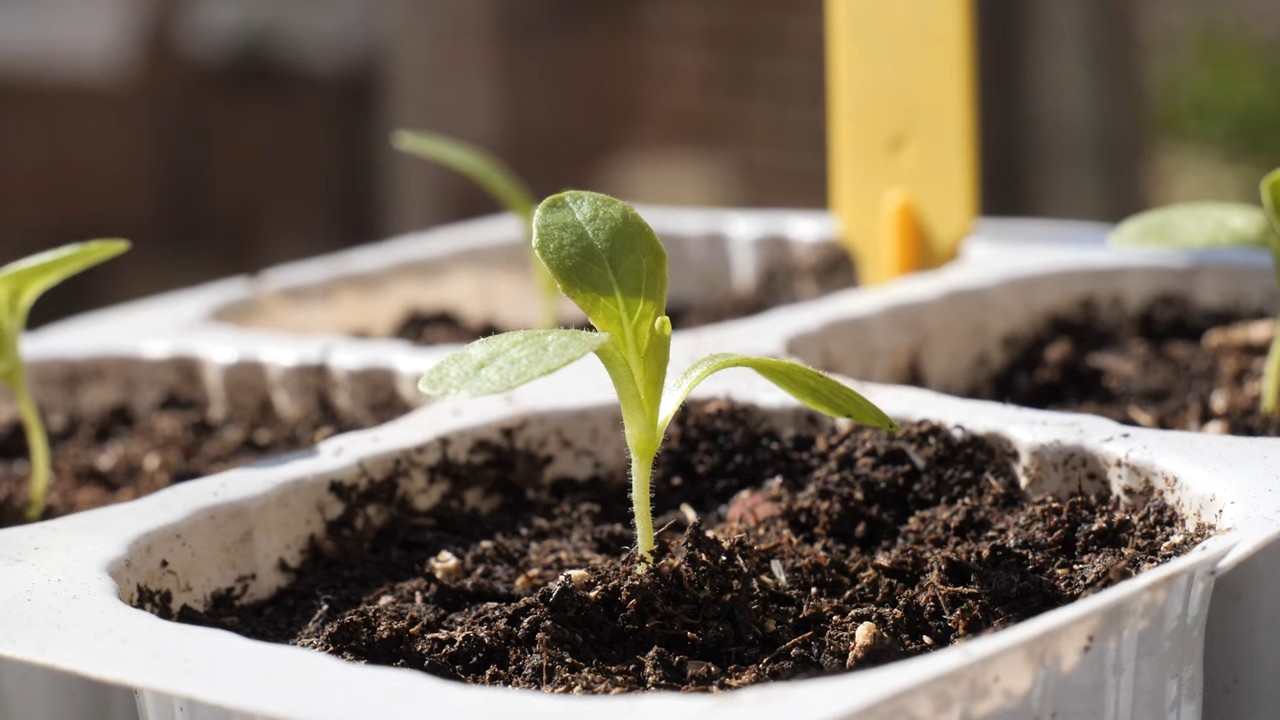
Conclusion
So, there you have it! Growing romaine lettuce hydroponically at home is not only achievable but also incredibly rewarding. Forget those limp, pre-packaged greens from the grocery store. Imagine crisp, vibrant, and utterly delicious romaine lettuce, harvested fresh from your own indoor garden whenever you need it. This DIY trick transforms your kitchen into a source of healthy, sustainable produce, putting you in control of what you eat and how it’s grown.
Why is this a must-try? Because it’s more than just growing lettuce; it’s about embracing a healthier lifestyle, reducing your environmental footprint, and experiencing the sheer joy of nurturing life. Hydroponics eliminates the need for soil, minimizing pests and diseases, and allowing you to optimize nutrient delivery for faster, more robust growth. Plus, it’s a fantastic way to introduce children to the wonders of gardening and the importance of fresh, healthy food.
But don’t stop at just plain romaine! Experiment with different varieties of romaine lettuce. Try growing ‘Little Gem’ for its compact size and sweet flavor, or ‘Red Romaine’ for a beautiful splash of color in your salads. You can also explore different nutrient solutions to fine-tune the taste and texture of your lettuce. Consider adding companion plants like basil or chives to your hydroponic system to naturally deter pests and enhance the flavor of your romaine.
Ready to take the plunge? We encourage you to try this DIY trick and experience the satisfaction of growing your own romaine lettuce hydroponically. It’s easier than you think, and the results are well worth the effort. Don’t be afraid to experiment, adapt the techniques to your specific environment, and most importantly, have fun!
Once you’ve harvested your first batch of homegrown romaine, we’d love to hear about your experience. Share your tips, tricks, and photos in the comments below. Let’s build a community of hydroponic enthusiasts and inspire others to embrace this sustainable and rewarding way of growing fresh produce. Your success story could be the inspiration someone else needs to start their own hydroponic journey!
Frequently Asked Questions (FAQ)
What exactly is hydroponics, and why is it better than growing in soil?
Hydroponics is a method of growing plants without soil, using mineral nutrient solutions in water. Instead of soil providing nutrients, the plant roots are directly exposed to a nutrient-rich solution. This allows for faster growth, higher yields, and reduced risk of soilborne diseases. It also uses less water than traditional soil-based gardening because the water is recirculated within the system. Hydroponics also allows for growing in areas where soil is poor or unavailable, such as urban environments.
What kind of hydroponic system is best for growing romaine lettuce?
For beginners, a simple deep water culture (DWC) or Kratky system is ideal. DWC involves suspending the lettuce roots in a nutrient solution with an air pump providing oxygen. The Kratky method is similar but doesn’t require an air pump; the water level is initially high, and as the plant grows and consumes the solution, an air gap forms, providing oxygen to the roots. As you become more experienced, you can explore more advanced systems like nutrient film technique (NFT) or ebb and flow (flood and drain).
What kind of nutrients do I need for hydroponic romaine lettuce?
You’ll need a balanced hydroponic nutrient solution specifically formulated for leafy greens. Look for a solution that contains essential macronutrients like nitrogen (N), phosphorus (P), and potassium (K), as well as micronutrients like iron (Fe), manganese (Mn), and zinc (Zn). Follow the manufacturer’s instructions for dilution and application. It’s crucial to monitor the pH of the nutrient solution, keeping it between 5.5 and 6.5 for optimal nutrient absorption.
How much light does hydroponic romaine lettuce need?
Romaine lettuce needs plenty of light to thrive. If you’re growing indoors, you’ll need to supplement natural light with artificial grow lights. LED grow lights are a great option because they are energy-efficient and produce minimal heat. Aim for 14-16 hours of light per day. Insufficient light can lead to leggy growth and poor leaf development.
How often should I change the nutrient solution?
The frequency of nutrient solution changes depends on the size of your system and the growth rate of your lettuce. As a general rule, change the nutrient solution every 1-2 weeks. Regularly monitor the pH and nutrient levels of the solution and adjust as needed. A sudden change in pH or nutrient levels can stress the plants.
What are some common problems I might encounter when growing romaine lettuce hydroponically, and how can I fix them?
Common problems include nutrient deficiencies, algae growth, and root rot. Nutrient deficiencies can be identified by yellowing or browning leaves. Adjust the nutrient solution accordingly. Algae growth can be prevented by keeping the nutrient solution covered and using opaque containers. Root rot is often caused by poor aeration or overwatering. Ensure adequate aeration and avoid letting the roots sit in stagnant water.
How long does it take to grow romaine lettuce hydroponically?
From seed to harvest, it typically takes 4-6 weeks to grow romaine lettuce hydroponically. The exact time will depend on the variety of lettuce, the growing conditions, and the nutrient solution used. You can start harvesting individual leaves once the lettuce is large enough, or you can harvest the entire head at once.
Can I grow other vegetables hydroponically alongside romaine lettuce?
Yes, you can grow other leafy greens like spinach, kale, and arugula alongside romaine lettuce. However, it’s important to choose plants with similar nutrient requirements and growth rates. Avoid growing plants that will shade the lettuce or compete for nutrients.
Is hydroponic lettuce as nutritious as soil-grown lettuce?
In many cases, hydroponic lettuce can be even more nutritious than soil-grown lettuce. Because hydroponic systems allow for precise control over nutrient delivery, the lettuce can be optimized for maximum nutrient content. Studies have shown that hydroponically grown produce can have higher levels of vitamins, minerals, and antioxidants.
How do I prevent algae growth in my hydroponic system?
Algae thrive in light and nutrient-rich environments, so preventing algae growth is crucial for a healthy hydroponic system. Here are some tips:
* Use opaque containers to block light from reaching the nutrient solution.
* Cover any exposed surfaces of the nutrient solution with a lid or reflective material.
* Maintain a clean system by regularly cleaning the reservoir and components.
* Consider adding a small amount of hydrogen peroxide to the nutrient solution to kill algae spores.
* Ensure proper air circulation to prevent stagnant water, which can promote algae growth.
What is the ideal temperature for growing romaine lettuce hydroponically?
The ideal temperature range for growing romaine lettuce hydroponically is between 60°F and 75°F (15°C and 24°C). Temperatures outside this range can stress the plants and affect their growth. High temperatures can cause bolting (premature flowering), while low temperatures can slow down growth.
How do I harvest my hydroponically grown romaine lettuce?
You can harvest romaine lettuce hydroponically in two ways:
* **Leaf-by-leaf harvesting:** This involves harvesting individual outer leaves as needed, allowing the plant to continue growing and producing more leaves.
* **Head harvesting:** This involves cutting the entire head of lettuce at the base, just above the root system.
Choose the harvesting method that best suits your needs and preferences. Leaf-by-leaf harvesting is ideal for continuous harvests, while head harvesting is better for a single, larger harvest.
Can I reuse the nutrient solution?
While you can technically reuse the nutrient solution, it’s generally not recommended for long periods. Over time, the nutrient balance can become skewed, and the solution can accumulate harmful bacteria or fungi. It’s best to change the nutrient solution every 1-2 weeks to ensure optimal plant health. If you do reuse the solution, be sure to monitor the pH and nutrient levels closely and adjust as needed.

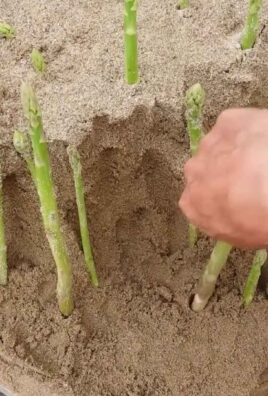
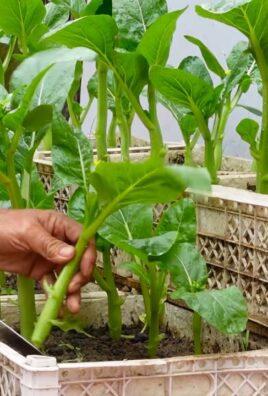
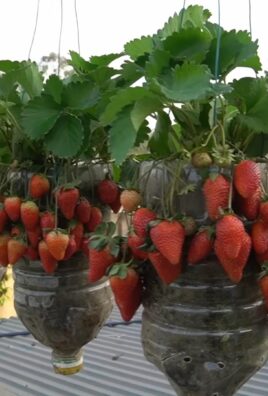
Leave a Comment